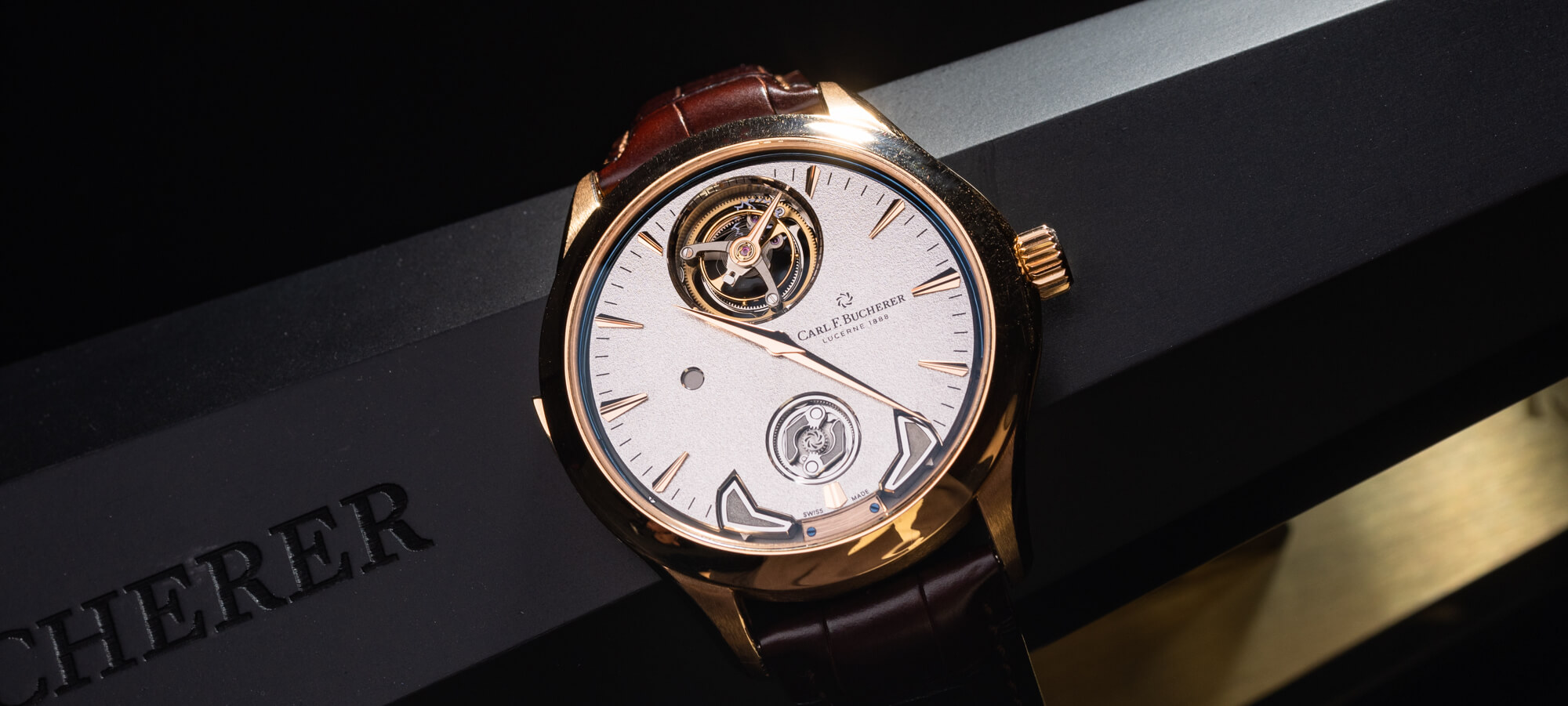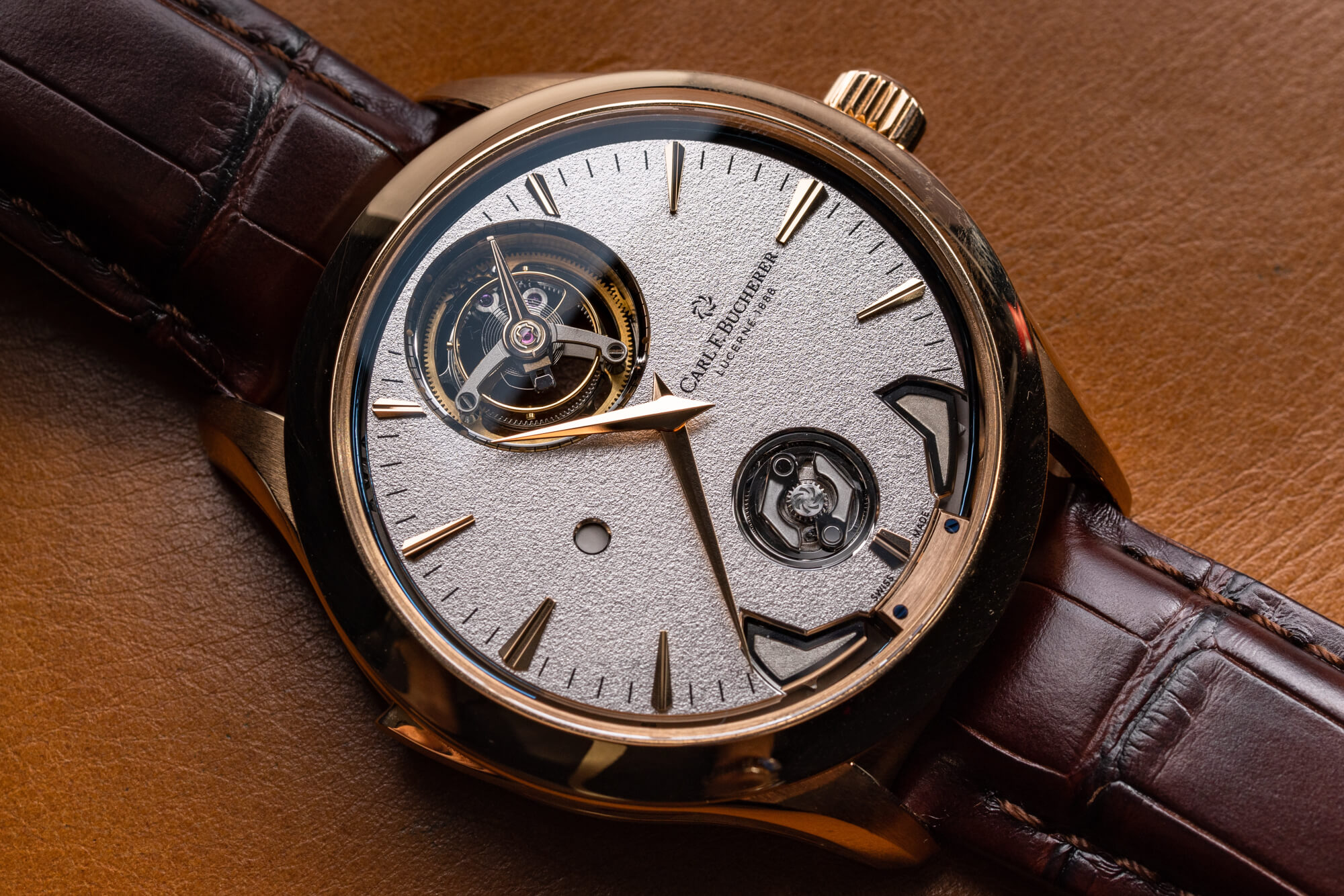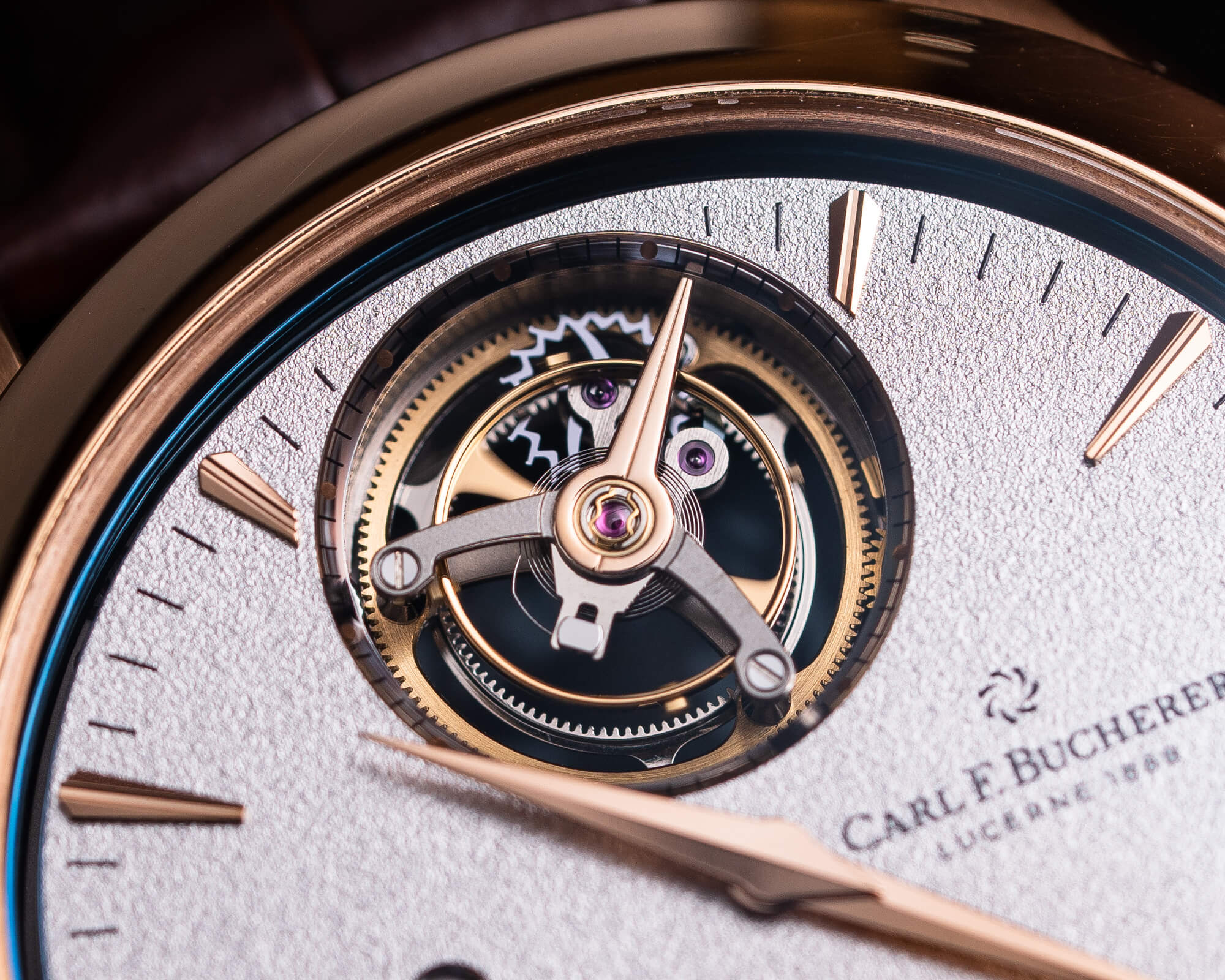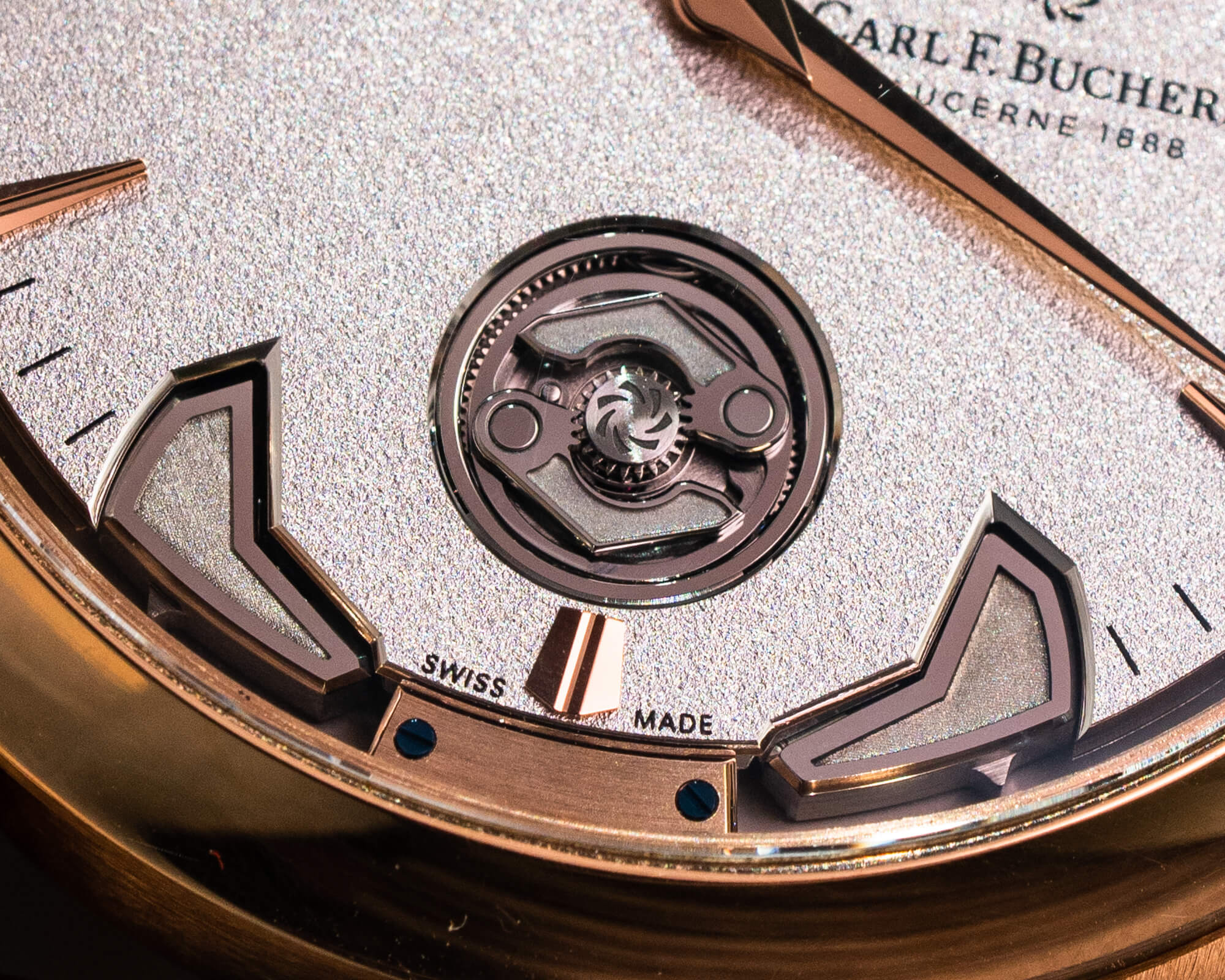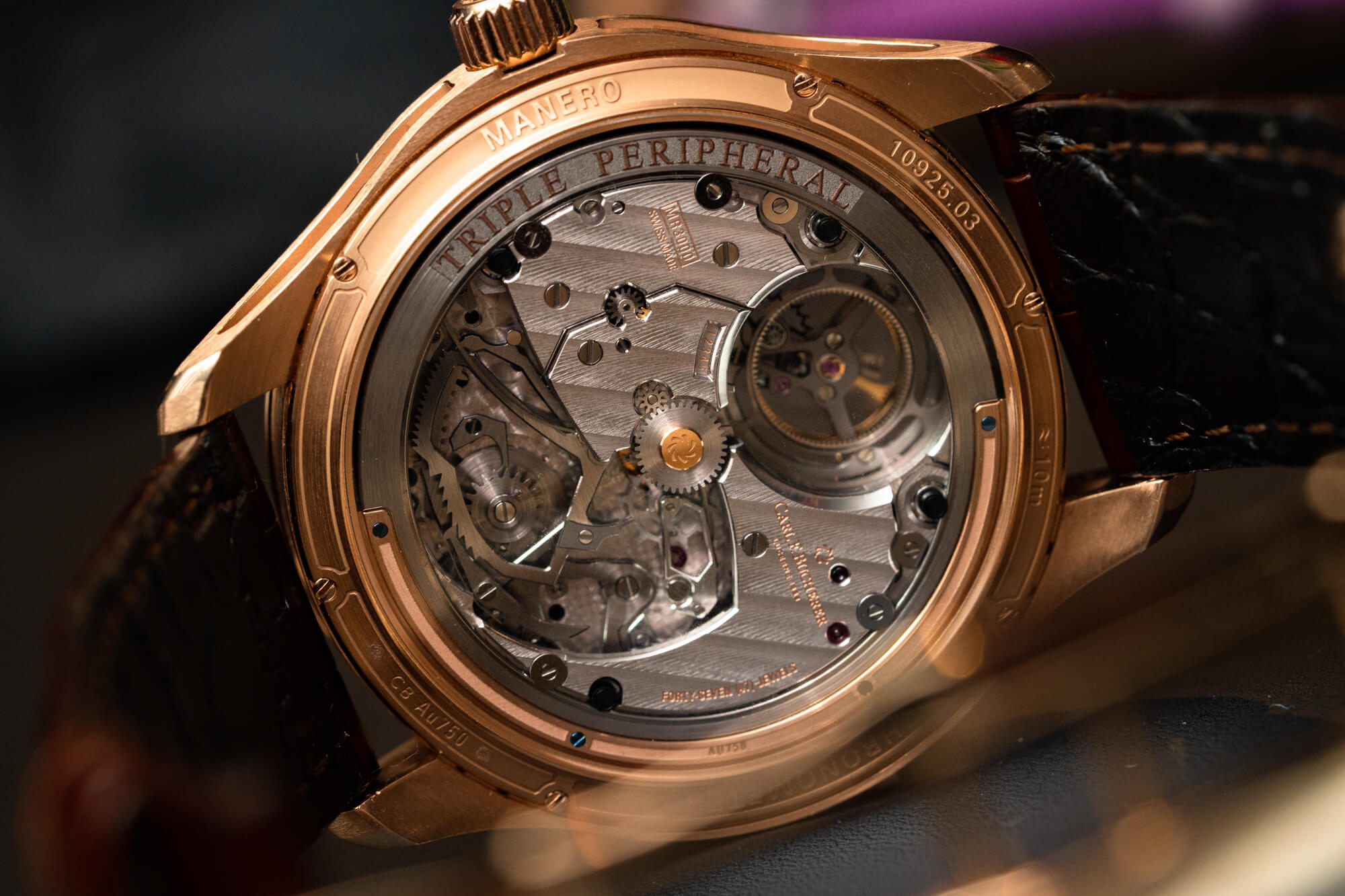There are very few instances in which a timepiece enthusiast is looking for practicality when spending several hundred thousand dollars. In a lot of ways, this is a similar concept to wanting practicality in a luxury exotic car. Like vehicles, most exotic and complicated wristwatches are beautiful but often not ideal for daily wear. In addition to being fragile (mechanically or cosmetically), many ultra-high-end watches are not per se ergonomic or convenient enough to comfortably wear on a daily basis. That is, of course, not always the case. I have a special place in my heart for those timepieces — like the Carl F. Bucherer Manero Minute Repeater Symphony — that attempt to combine a mechanical fascination with a package that you could happily wear on your wrist at least a few times a week. These watches often combine the best of traditional watchmaking with a more understated nature that allows them to be worn discreetly, rather than flamboyantly.
The Carl F. Bucherer Manero Minute Repeater Symphony originally debuted in 2021 as a limited edition of 88 pieces in 18k rose gold. Carl F. Bucherer also produces various one-off piece unique models that typically cost about $100,000 – $150,000 USD more than the “base” model. Those one-off pieces typically include more elaborate dial decoration, other case materials, and precious stone settings. The base limited-edition model is no slouch, however, and is best for those who like traditional design and dial appointments.
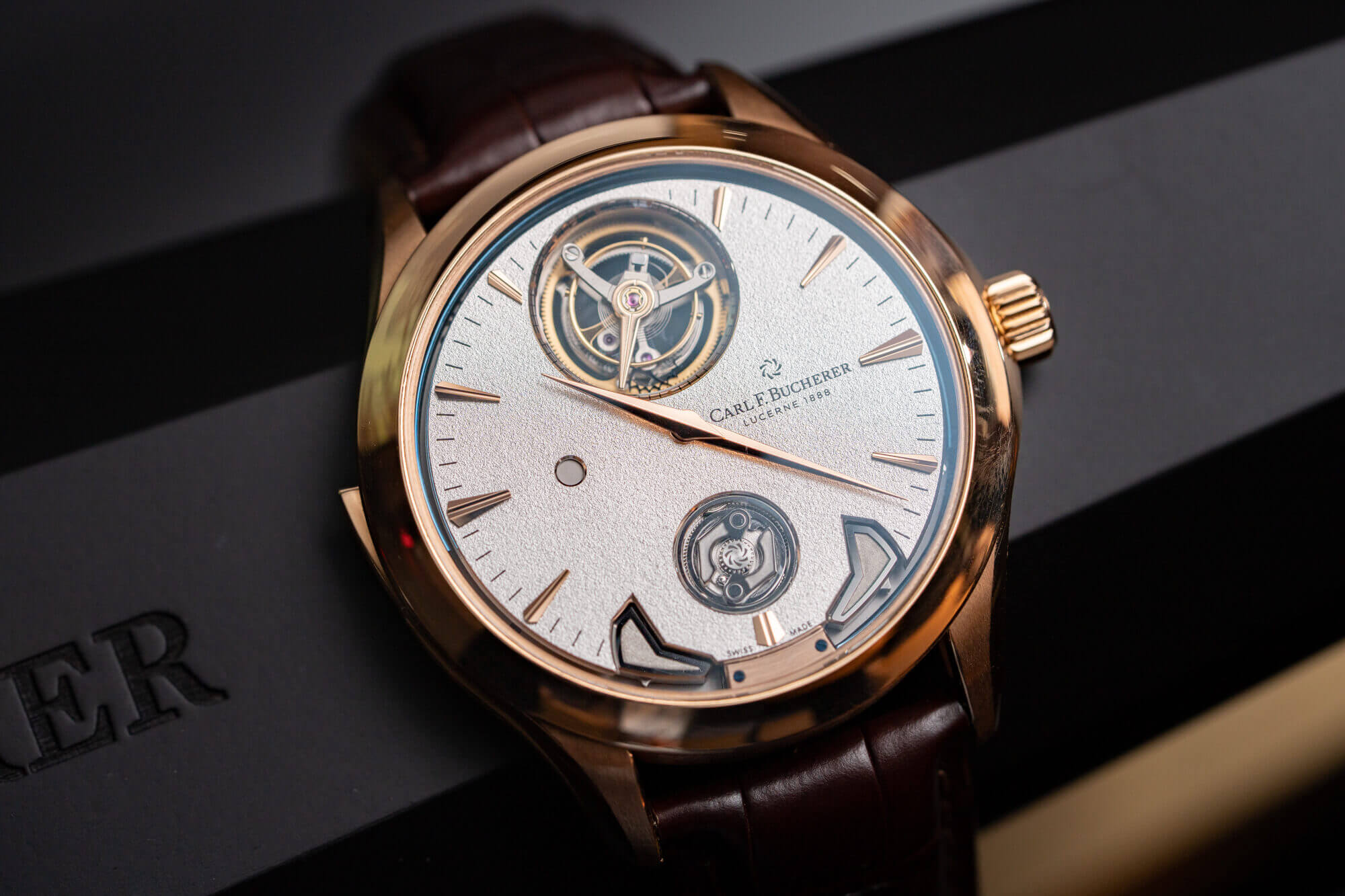
While the Manero Minute Repeater Symphony is not per se a small watch, it is about as compact as the Carl F. Bucherer movement and case engineers could make it. In 18k rose gold, the case is 43.8mm wide and just 12.47mm thick. It has 10 meters of water resistance (don’t expect much from chiming minute repeaters with decent sound quality) and a sapphire crystal over the dial and movement. The case looks simple at a glance, but it has a complex and almost modern style to it, especially when viewed from the sides. Overall, the watch is a deliberate contrast between modern and classic design elements. This includes the case, dial, and of course the in-house automatic CFB MR3000 movement. Those more familiar with watch movement design will see what I’m talking about. Carl F. Bucherer overall does a great job melding traditional surface decoration techniques with bridges and movement components that have more modern, angular/geometric designs to them.
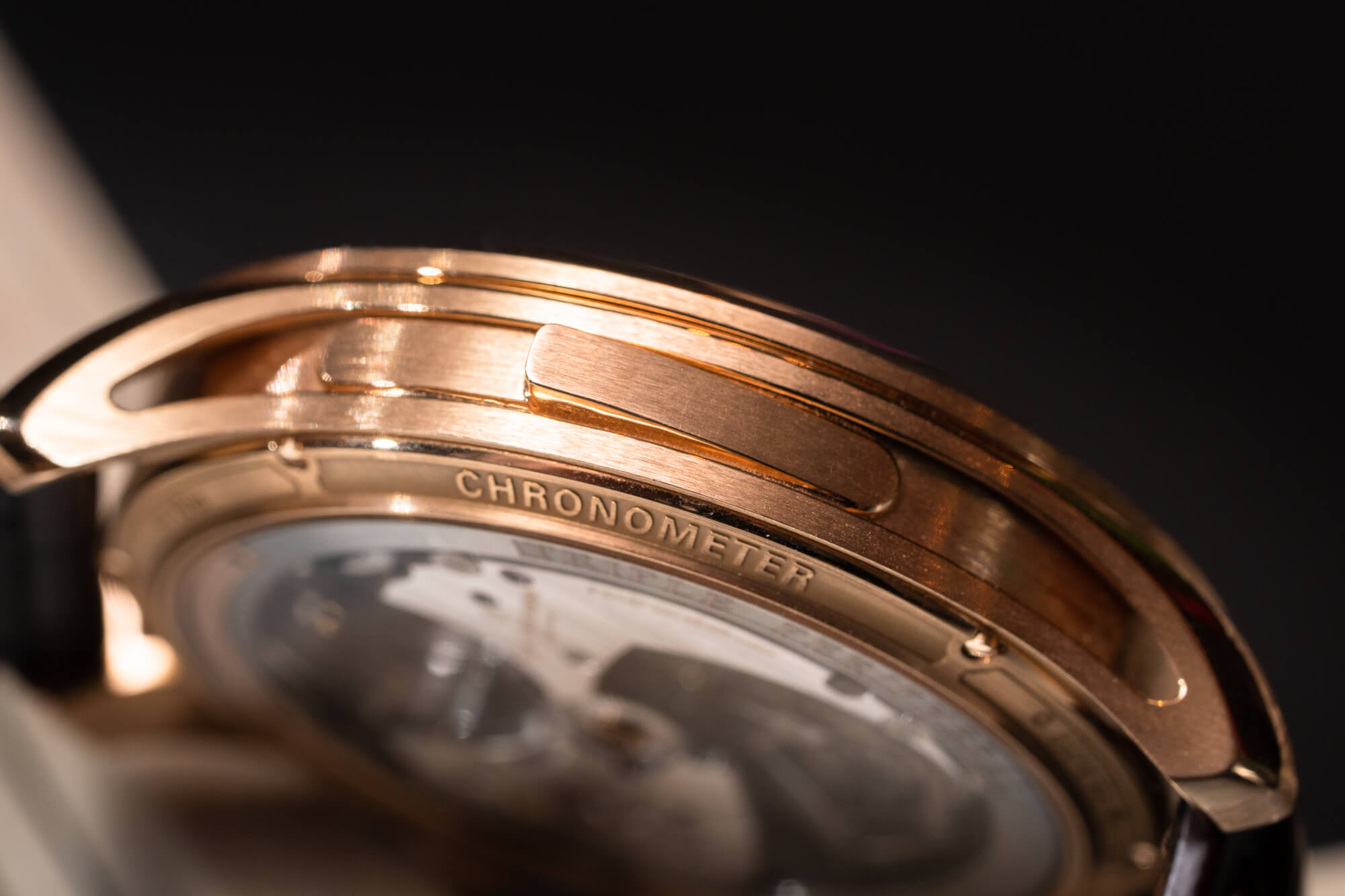
The Manero Minute Repeater Symphony case design does a good job of visually reducing mass from what is a wider-sized watch. It still wears very comfortably — even for smaller wrist sizes. The legible dial and relatively clean face help give the watch a more timeless and thus daily-wear style. The applied hour markers and dauphine-style hands help keep the dial feeling traditional, whereas the exposed movement components are where modernity comes in.
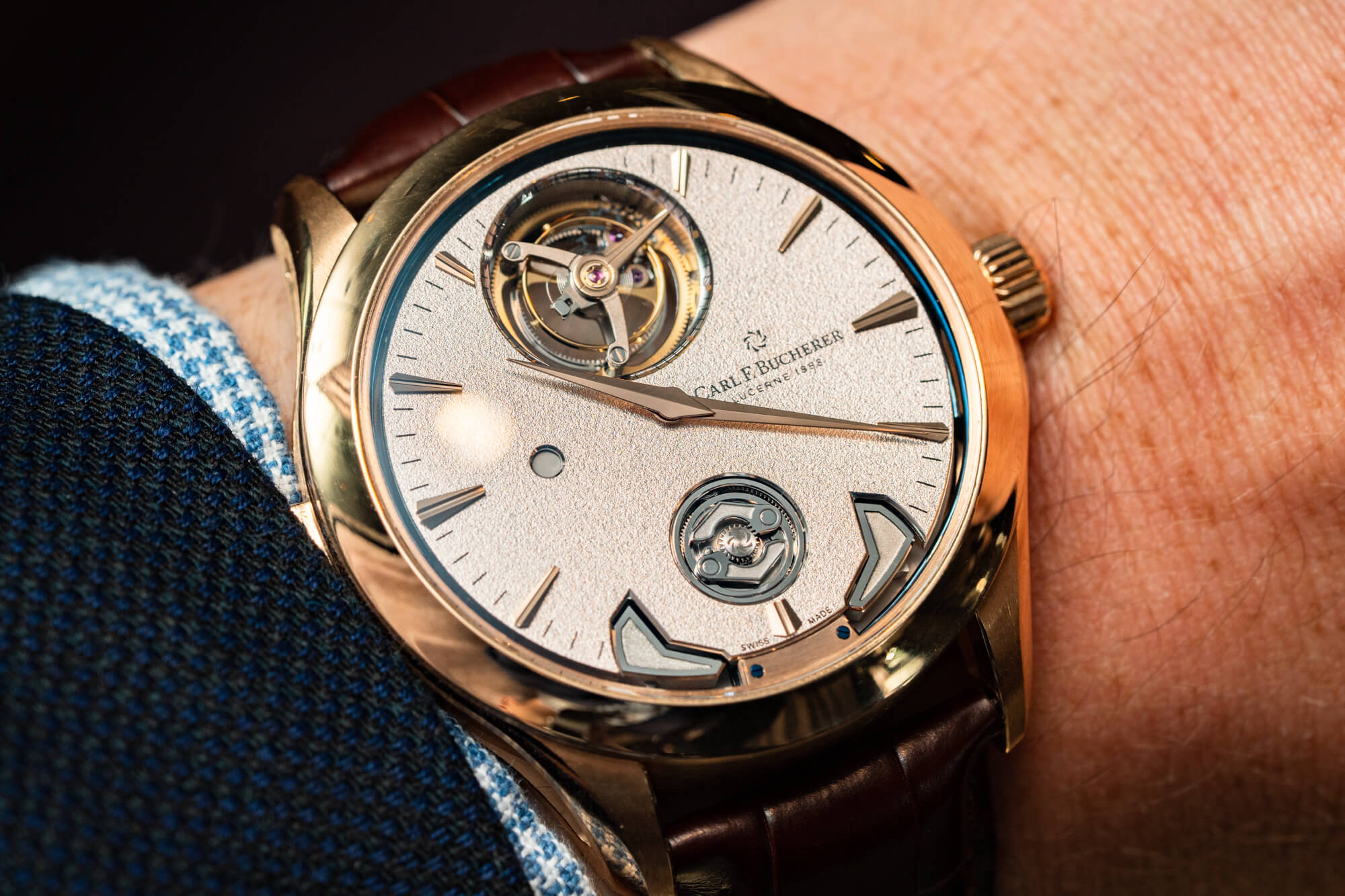
On the dial, you see a variety of things, which again, don’t ever feel too busy or cluttered. The time is told via the main hour and minute hands along with the flying tourbillon case (under 12 o’clock) acting as the subsidiary seconds dial. At the bottom of the dial are the two hammers for the chiming minute repeater complication and above it is Carl F. Bucherer’s own governer system for the minute repeater. This spinning component uses air resistance to slow down the operation of the minute repeater — and is a concept that has been used for literally hundreds of years. One additional dial feature is the small window near the 9 o’clock position on the dial. This is a safety window. When the minute repeater is activated, it shows a small musical note. This tells you not to mess with other operations of the watch. When the crown is pulled out, it shows red, meaning that you should not attempt to adjust the minute repeater (it’s a big no-no to ever try to adjust the time on a watch while the minute repeater is active). On the left side of the Manero Symphony case is the minute repeater’s all-or-nothing sliding activator switch.
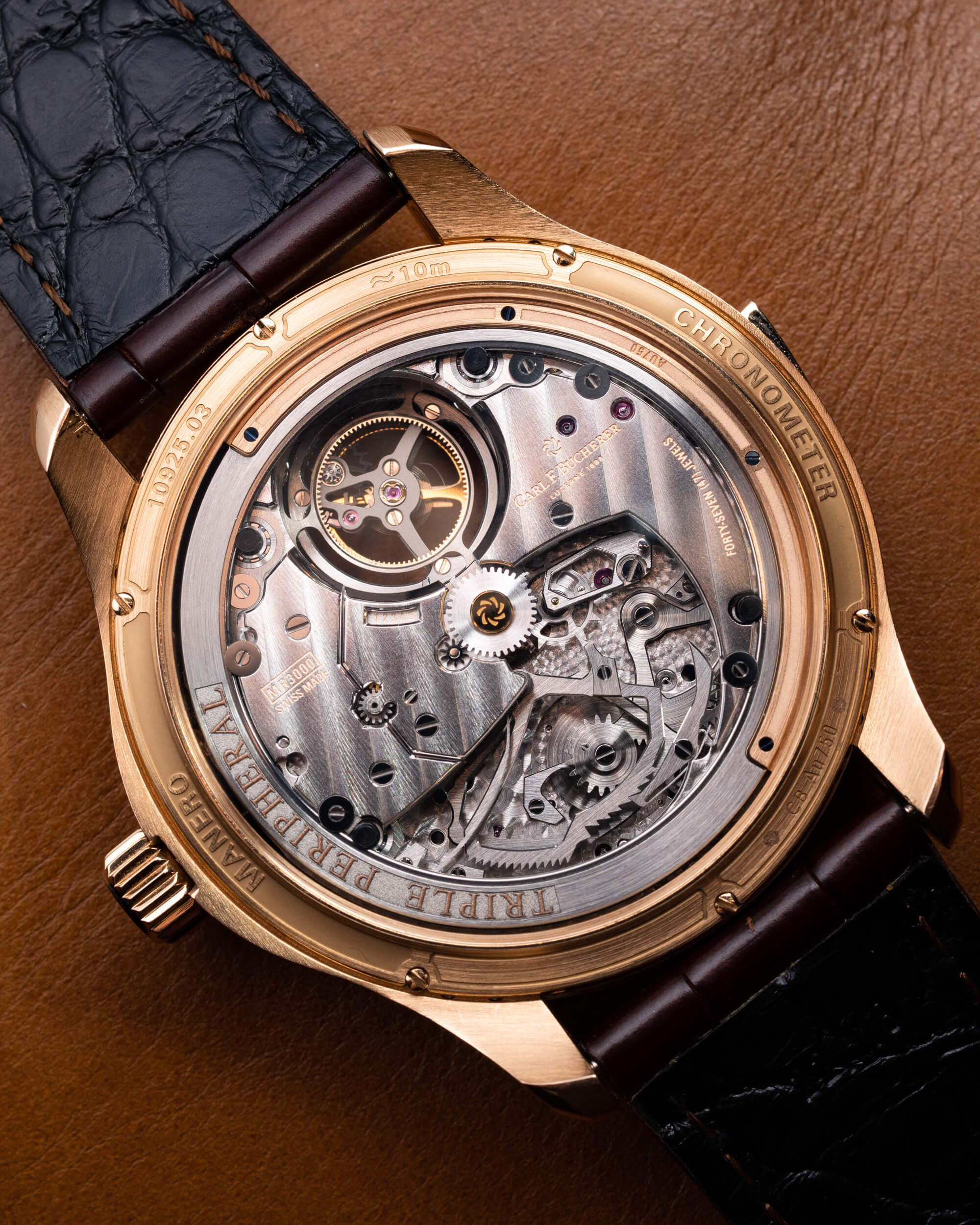
On the rear of the watch, you can see more of the CFB MR3000 movement’s visual glory. You also get to see more of Carl F. Bucherer’s Triple Peripheral concept, which more importantly includes its peripheral automatic winding system (the other two peripheral elements being the placement of the tourbillon and the minute repeater). Carl F. Bucherer’s peripheral winding technology predates that of some of the competitors and is an excellent way to offer the convenience of automatic winding with the beauty of a manually wound movement because the automatic rotor does not obstruct a view of the movement. It also helps keep the movement thin, because rather than build vertically, the width of the CFB MR3000 (35.7mm wide) allowed for Carl F. Bucherer to build horizontally. Thus, the automatic winding system exists around the core movement as opposed to under it. The movement operates at 3Hz with 65 hours of power reserve. It is really fun to look at and operate.
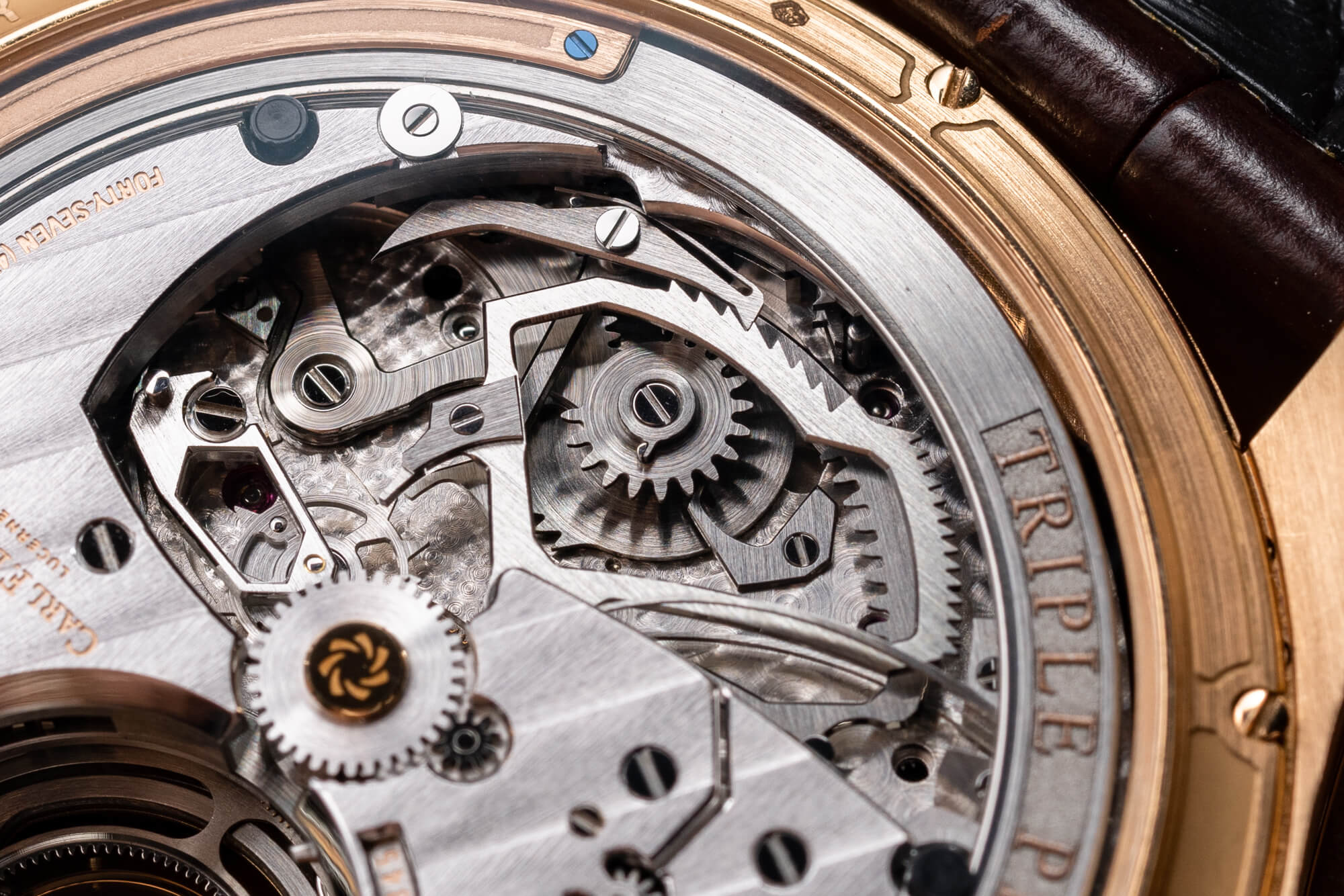
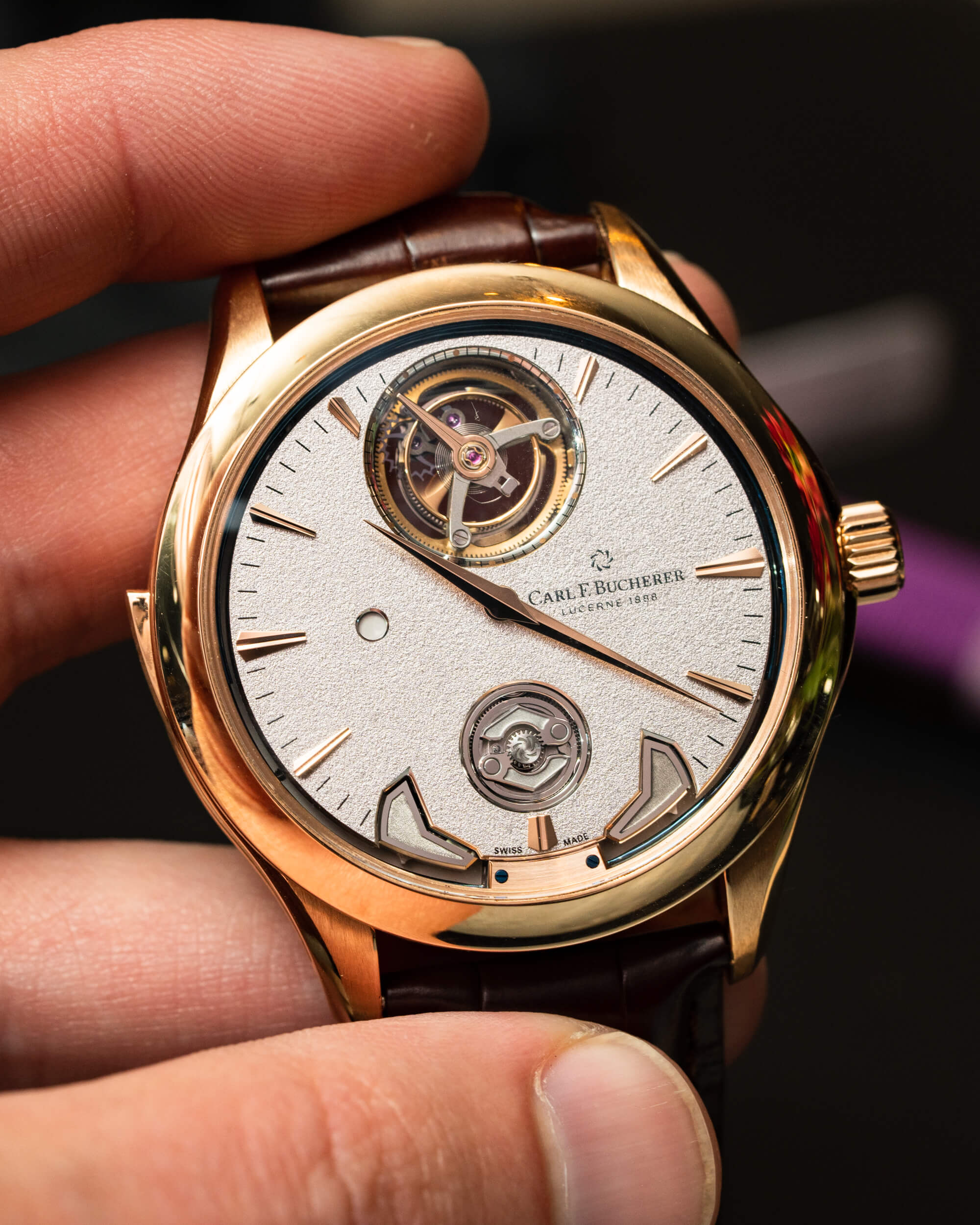 What is the point of a watch with automatic winding, a tourbillon, and a minute repeater? In essence, it is what I said above, which is to combine two of the most desirable luxury watch complications with the convenience of automatic winding and the ability to have a relaxed, more casual classic style. The silvered dial, rose gold case, and brown alligator strap make for a handsome combination. It is possible that after this limited edition of 88 pieces sells out (that usually takes a few years), Carl F. Bucherer will return with a new limited-edition model in another material. We shall see. When you get the watch, it also comes with a bespoke wooden amplifier stand (seen in the lead photo), which helps the minute repeater sound its best. The price for the very high-end and surprisingly practical Carl F. Bucherer Manero Minute Repeater Symphony watch is $400,000 USD. Learn more at the Carl F. Bucherer website.
What is the point of a watch with automatic winding, a tourbillon, and a minute repeater? In essence, it is what I said above, which is to combine two of the most desirable luxury watch complications with the convenience of automatic winding and the ability to have a relaxed, more casual classic style. The silvered dial, rose gold case, and brown alligator strap make for a handsome combination. It is possible that after this limited edition of 88 pieces sells out (that usually takes a few years), Carl F. Bucherer will return with a new limited-edition model in another material. We shall see. When you get the watch, it also comes with a bespoke wooden amplifier stand (seen in the lead photo), which helps the minute repeater sound its best. The price for the very high-end and surprisingly practical Carl F. Bucherer Manero Minute Repeater Symphony watch is $400,000 USD. Learn more at the Carl F. Bucherer website.

